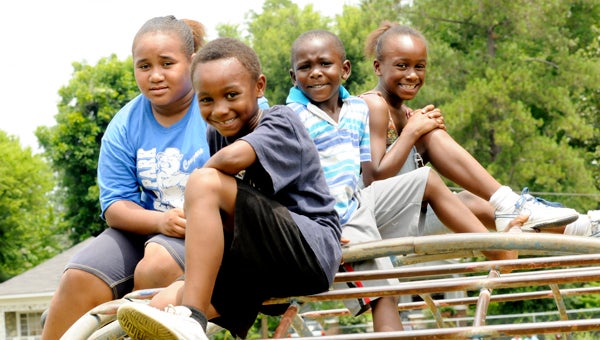State ranks 44th in children’s well being
Published 9:00 pm Thursday, July 11, 2013

PLAY AND LEARN: Kids enjoy some playground time during the All Things Are Possible summer day camp, where they learn summer educational supplements and the importance of fitness. –Ashley Johnson
Alabama ranks 44th in the nation in terms of overall child well being, according to the 2013 Kids Count Data Book, a study released by Annie E. Casey Foundation. And although this ranking is far from the top, it is an improvement compared to previous years.
The study measures child well-being based on four categories — health, education, economic well-being and family and community. Alabama showed the most improvement in health and education.
Linda Tilly, executive director of VOICES for Alabama’s Children, said the state’s ranking is “nothing to cheer about,” but still represents strong improvement.
“We’re pleased with mixed feelings about the results. It’s not where we want to be and it’s not where I believe the state of Alabama can be,” Tilly said. “However, I have a sense that we are gaining momentum, and that many of the things that we have done well over the past 10 or 15 years are now starting to show up.”
Specifically, Tilly said the Alabama Science and Math Technology Initiative (AMSTI) paired with state wide reading initiatives has helped boost child well being in terms of education. Also, because Alabama has continuously ranked low in the study, several policy makers and children’s advocates have taken note, and responded with action.
“In almost all cases, we can look and say ‘Well, we made a policy or budget decision that helped us improve there,’” Tilly said. “There are certainly a lot of individuals and groups who have made this possible.”
In the health category, the number of child and teen deaths decreased along with the number of children without health insurance, which declined by 38 percent. The percentage of low birth weight babies also declined.
However, the study showed that 28 percent of children in Alabama are living in poverty, up from 25 percent in 2005. Also, approximately 35 percent of children had a parent who was unemployed in 2011, which is up from 30 percent in 2011; while the number of children in single parent families increased from 27 percent in 2005 to 39 percent in 2011.
Laura Speer, associate director for policy reform and advocacy at the Annie E. Casey Foundation said although Alabama had some dismal numbers, the state as a whole has made great strides to rise in the rankings.
“The fact that the state has moved as much as it has, especially in the health domain, is really encouraging,” Speer said. “Alabama has tracked pretty closely with what’s going on at the national level in terms of improvement. I think it’s a testament of what can be done.”
However, Speer said in some areas — like education — Alabama still has a long way to go.
“This is really just the tip of the ice berg. There are a lot of other areas that need to be examined in order to see real improvement,” she said.
Specifically, Tilly said the state needs more children enrolled in pre-K programs and a higher emphasis placed on daycare inspections. She also noted that programs like AMSTI should be implemented throughout the state.
“We should all acknowledge this momentum and ask ourselves what can we do to keep moving,” Tilly said. “There’s been a lot of improvement in the past years and I believe we can be much, much better.”
The Data Book listed the top five states in child well being as New Hampshire, Vermont, Massachusetts, Minnesota and New Jersey. The bottom five states included Louisiana, Arizona, Nevada, Mississippi and New Mexico.
A data book examining county-by-county statistics will be released in September. For more information on the study, visit datacenter.kidscount.org.




